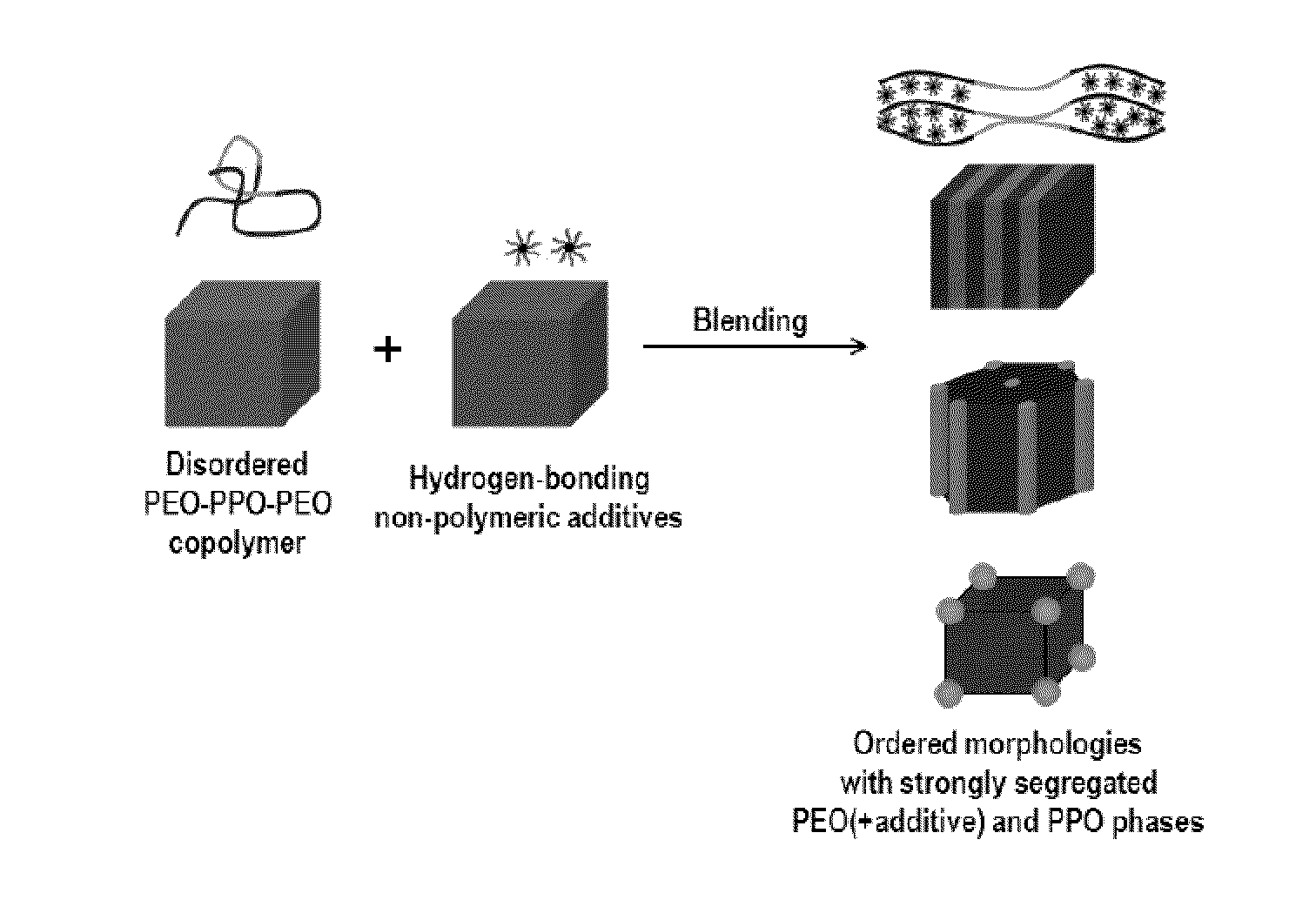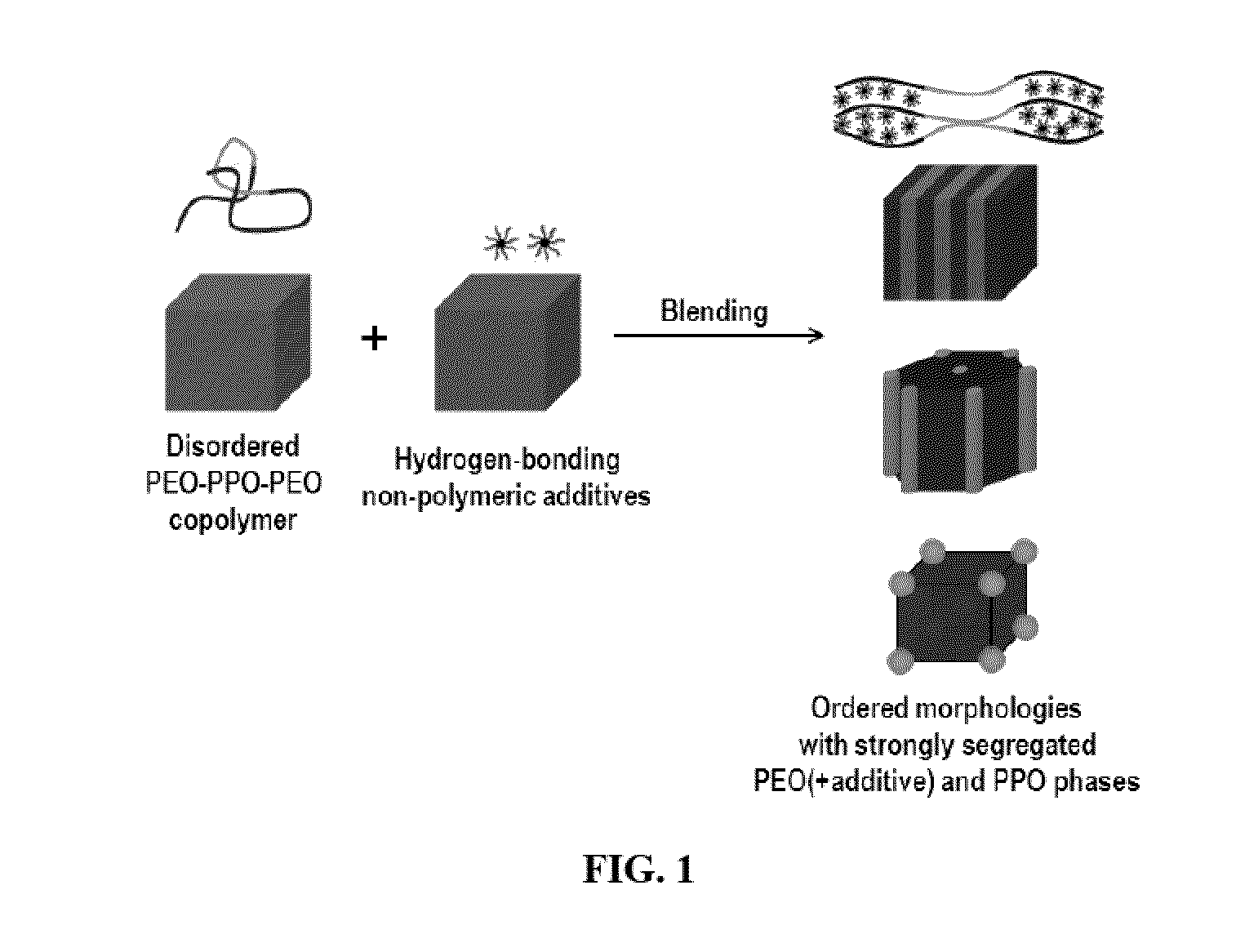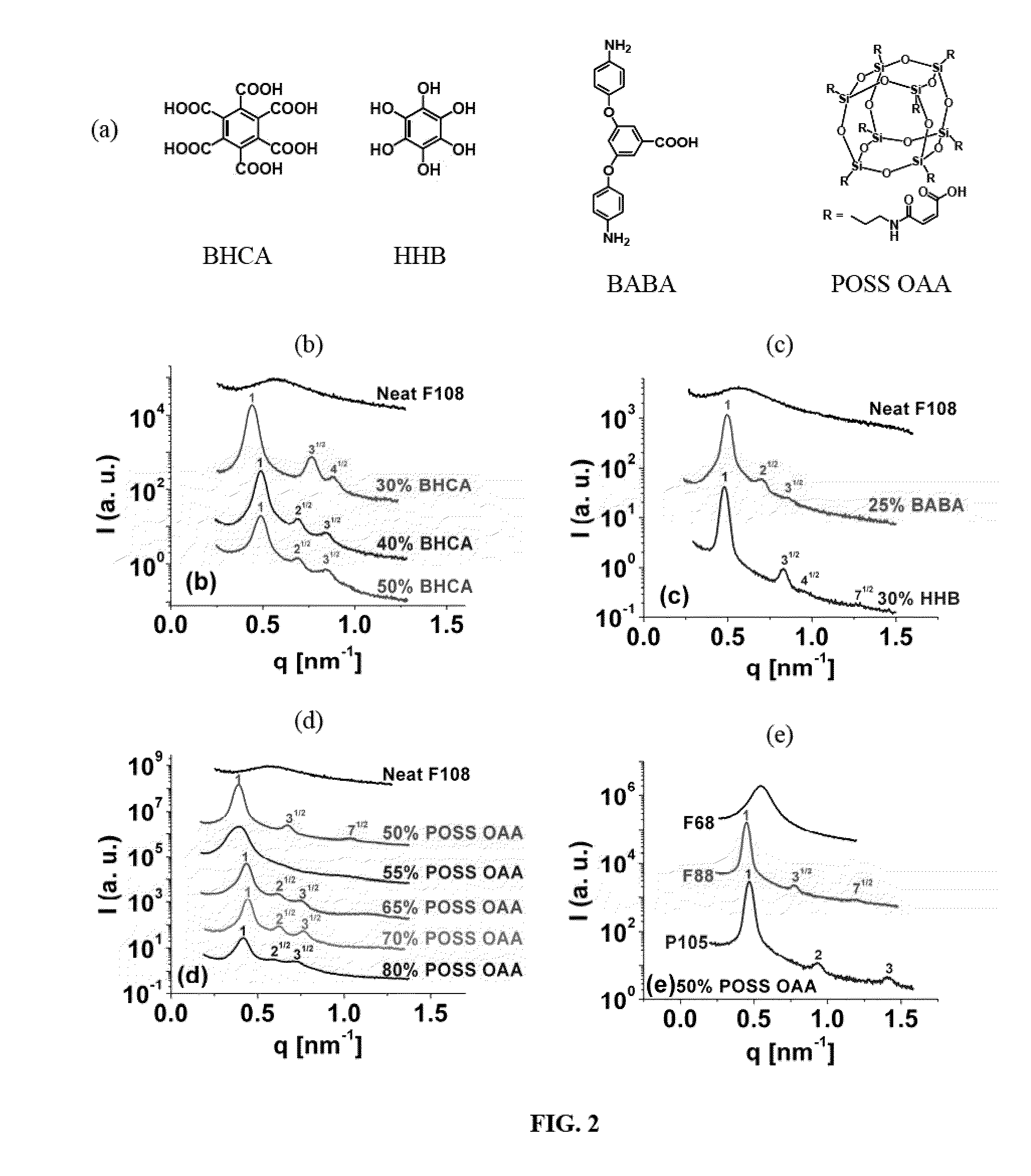Induced polymer assemblies
a polymer and induced technology, applied in the field of additives induced polymer assemblies, can solve the problems of reducing molar mass, weakening segregation strength, and needing to maintain acceptable costs, and achieve the effect of enhancing a somewhat ordered copolymer composi
- Summary
- Abstract
- Description
- Claims
- Application Information
AI Technical Summary
Benefits of technology
Problems solved by technology
Method used
Image
Examples
example 1
PS-PEO+POSS OAA
[0096]PS-PEO (PS=3.8 kg / mol and PEO=4.8 kg / mol) is disordered when in neat form. Upon incorporation of 30 (w / w) % and 40 (w / w) % POSS octa amic acid the blends formed well ordered morphologies. FIG. 6 shows the scattering profiles measured at 80° C. representing this behavior of disorder-to-order transition.
example 2
PS-PEO+POSS OAP
[0097]PS-PEO (PS=9.5 kg / mol and PEO=5 kg / mol) is phase segregated but not well ordered as indicated by formation of a primary peak but no higher order peaks in the SAXS profile in FIG. 7. Upon incorporation of 10 (w / w) % POSS octa aminophynyl (POSS OAP) the resulting blend formed well ordered cylindrical morphology as also shown in FIG. 7. Compared to neat PS-PEO, the increase in domain spacing for the case of the blend indicates molecular incorporation of POSS OAP.
example 3
F108+Si NPs functionalized with Allyl Amine Groups (Nanoparticles Abbreviated as Si—R—NH2)
[0098]FIG. 8 shows the SAXS profiles of neat F108 and its blend with Si nanoparticles containing allylamine ligands. F108 is disordered as indicated by a broad peak, a characteristic signature of disordered block copolymers (Leibler, L. Macromolecules 1980, 13, 1602-1617). On the other hand, ordering is induced when Si-allyamine nanoparticles are blended in F108. Figure shows that blending 30 (w / w) % lead to formation of cylindrical morphology while blending 40 (w / w) % lead to formation of spherical morphology. Multiple higher order peaks indicate formation of well ordered morphologies.
[0099]DSC thermograms shown in the FIG. 9 below indicate that the crystallization of PEO was completely quenched due to strong interaction with the nanoparticle ligands and the glass transition temperature was found to be around 20.6° C.
PUM
| Property | Measurement | Unit |
|---|---|---|
| domain sizes | aaaaa | aaaaa |
| domain sizes | aaaaa | aaaaa |
| domain sizes | aaaaa | aaaaa |
Abstract
Description
Claims
Application Information
 Login to View More
Login to View More - R&D
- Intellectual Property
- Life Sciences
- Materials
- Tech Scout
- Unparalleled Data Quality
- Higher Quality Content
- 60% Fewer Hallucinations
Browse by: Latest US Patents, China's latest patents, Technical Efficacy Thesaurus, Application Domain, Technology Topic, Popular Technical Reports.
© 2025 PatSnap. All rights reserved.Legal|Privacy policy|Modern Slavery Act Transparency Statement|Sitemap|About US| Contact US: help@patsnap.com



